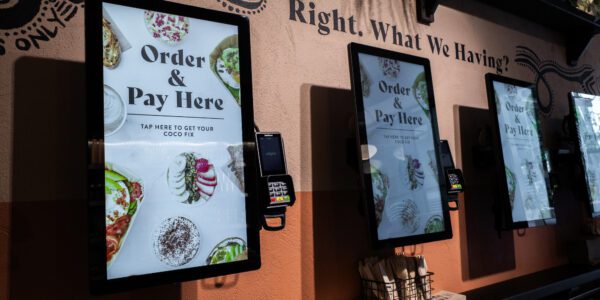7 incredible benefits of using self service kiosks in your restaurant
Self serve kiosks aren’t just for McDonalds any more. Discover the financial and operational benefits of kiosks and why they might be right for your restaurant.

From 6th April, new government legislation will see calorie labelling on menus become mandatory for operators in England with over 250 employees. The most significant changes include adding calories for individual menu items and displaying the statement that ‘adults need around 2000 kcal a day’. This new law is part of a wider government strategy to tackle obesity and promote healthy eating.
After the challenges posed by Covid, it’s understandable that both the timing and the depth of the new measures have had their fair share of criticism within the industry. But while the shift towards greater transparency arguably brings challenges, it also brings a unique opportunity for operators to set themselves apart.
While the government is focused on public health, the trend for transparency is being driven by consumers. Customers want increased transparency from the brands they buy from – whether it’s about nutrition, origin and welfare, or sustainability. This isn’t new, in fact, the trend for transparency started long ago. For more than a decade now, chain operators in New York have had to supply calorie counts and nutrition statements on their menus. As we evolve globally, it’s important operators both large and small adapt and acknowledge that this goes beyond compliance.
From Natasha’s Law to the rise of plant-based diets, it’s impossible to ignore that customers are coming to expect more information about how and where their food is made and demand for information to be readily available at the point of choice is growing. We already have it on the food we buy in supermarkets, why not in our restaurants or our takeaways?
Arguably the trend towards transparency is only going to accelerate with the introduction of calorie labelling. While the legislation only applies to larger businesses at the moment, operators across the industry should be proactive in thinking about how the changes might affect consumer expectations. If bigger companies are offering this information, it’s likely that customers might come to expect this from smaller restaurants, cafes and takeaways. Operators who are not agile enough to respond might run the risk of losing out which could affect your bottom line.
Back in 2015 when we opened the first totally digital and cashless QSRs in the UK, our aim was to put nutrition information at the heart of the concept. We built technology that allowed customers to fully customise their meals based on their preferences, goals or health. However indulgent, calorie counts were clearly displayed at the point of sale for every item.
We learnt that informing customers didn’t reduce demand. In fact, one of the highest calorie dishes – beef short rib with buttery sweet potato mash – sold just as well as the low-calorie menu items. Rather than avoid the calorific dishes, we heard from customers that it simply helped them to make more informed decisions outside of the restaurant. For example, they might consider a lighter lunch ahead of a big dinner or a lighter breakfast the next day.
By making information readily available, it empowered customers to build the right meal and we saw loyalty and satisfaction increase as a result.
While the demand for more nutritional information started many years ago, operators who want to get a head start on the next major trend need to think about how sustainable their menu is. Experts say changing the way we eat is necessary for the future of the planet but that government policy is needed alongside this. Could legislation on environmental labelling come next?
Research by Innova Market Insights found that two thirds of consumers are willing to pay more for sustainable products, and that figure is even higher for millennials (73%) and Gen Z (72%). Three in five global consumers said that they are interested in “learning more about where their food comes from and how it is made.” The phrase ‘clean label’ has gone from providing transparency around calories and nutrition to also showing how eco-friendly and humane food is. With many of us keen to get a better understanding of the social impact of our food choices, it wouldn’t be surprising if eco-labels such as a product’s greenhouse gas emissions, water use or origin started to appear on menus in the near future.
Regardless of what change comes next for the industry, now is a great time for operators to think about their food labelling strategy and what they can do to meet the ever-changing consumer demands faster. Honesty and transparency will help to attract and retain more conscientious and brand loyal consumers.
Check out our calorie labelling features or if you want to talk about the changes in more detail, get in touch to see how we can help you get ready for the new calorie labelling rules.
Self serve kiosks aren’t just for McDonalds any more. Discover the financial and operational benefits of kiosks and why they might be right for your restaurant.

Learn the benefits of centralising your hospitality data, and how easy-to-read, real-time reports will help you scale your business.

Innovating Hospitality: Lessons from the Retail Sector
